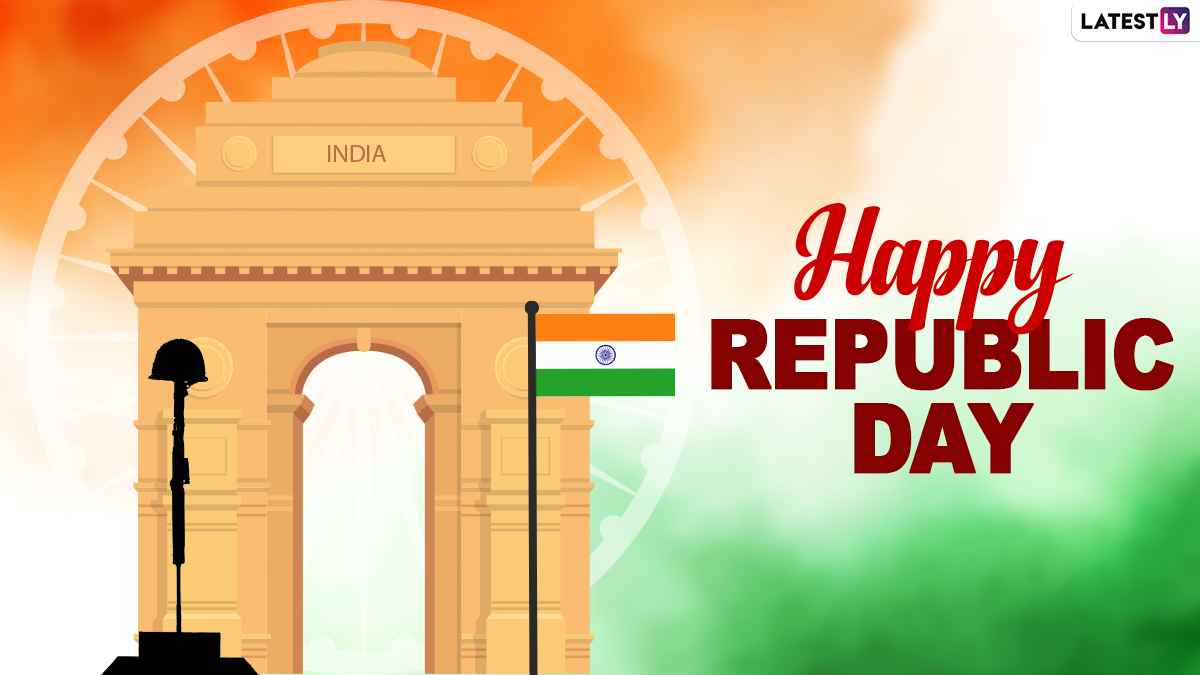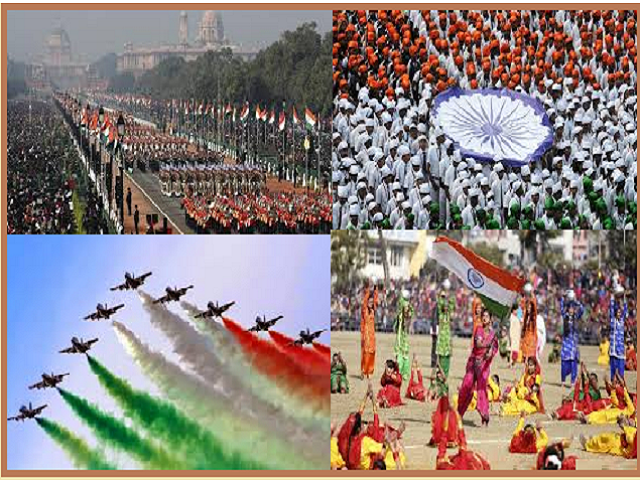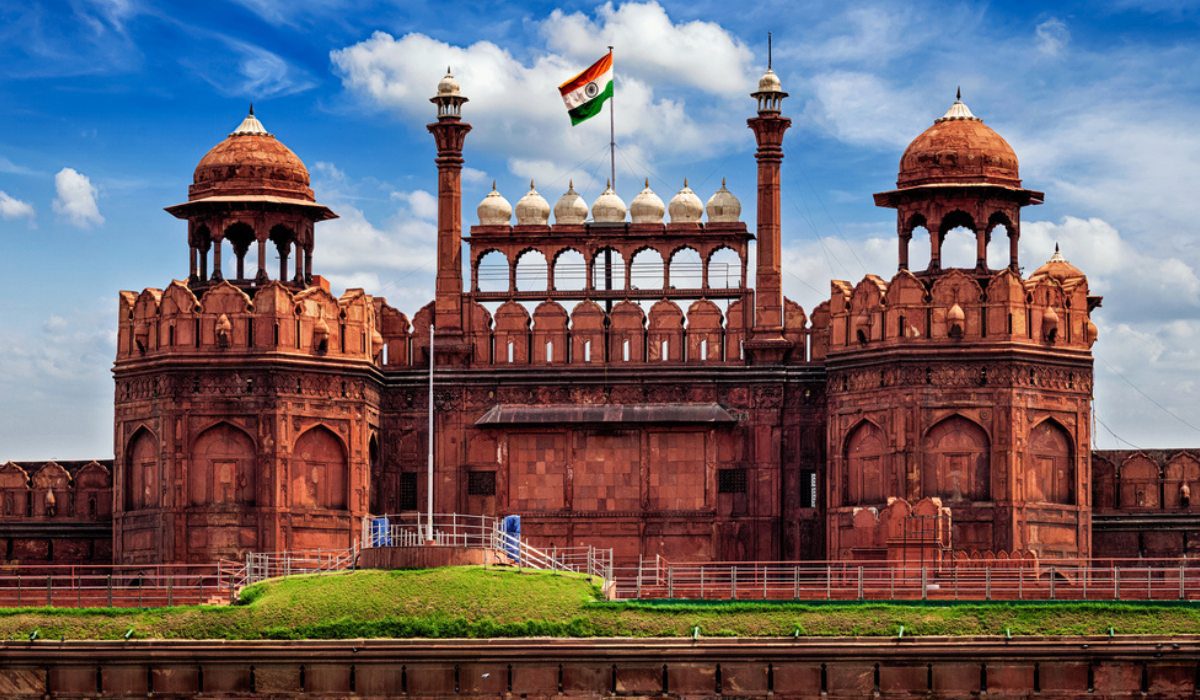Republic Day is a national holiday in India, when the country marks and celebrates the date on which the Constitution of India came into effect on 26, January 1950, replacing the Government of India Act (1935) as the governing document of India and thus, turning the nation into a newly formed republic.[1]
 |
| Click on any image to see offers! |
The day also marks the transition of India from an autonomous Commonwealth realm with British Monarch as nominal head of the Indian Dominion, to a fully sovereign republic in the Commonwealth of Nations with the President of India as the nominal head of the Indian Union.
The Constitution was adopted by the Indian Constituent Assembly on 26 November 1949 and came into effect on 26 January 1950 with a democratic government system, completing the country's transition towards becoming an independent republic. 26 January was chosen as the date for Republic day because it was on this day in 1929 when the Declaration of Indian Independence (Purna Swaraj) was proclaimed by the Indian National Congress in lieu of the Realm status as a Dominion later instated by the departing British Regime.
Contents
1 History of Republic Day
2 Celebrations
1) Delhi Republic Day parade
2) Beating Retreat
3) Award distribution
4 importance
5 References
History of Republic Day
India achieved independence from British Raj on 15 August 1947 following the Indian independence movement. The independence came through the Indian Independence Act 1947 (10 & 11 Geo 6 c 30), an Act of the Parliament of the United Kingdom that partitioned British India into the two new independent Dominions of the British Commonwealth (later Commonwealth of Nations).[2] India obtained its independence on 15 August 1947 as a constitutional monarchy with George VI as head of state and the Earl Mountbatten as governor-general.
The presidant of india unfrul the flag on republic day.The country, though, did not yet have a permanent constitution; instead its laws were based on the modified colonial Government of India Act 1935. On 29 August 1947, a resolution was moved for the appointment of Drafting Committee, which was appointed to draft a permanent constitution, with Dr B R Ambedkar as chairman. While India's Independence Day celebrates its freedom from British Rule, the Republic Day celebrates the coming into force of its constitution.

A draft constitution was prepared by the committee and submitted to the Constituent Assembly on 4 November 1947.[3] The Assembly met, in sessions open to public, for 166 days, spread over a period of two years, 11 months and 18 days before adopting the Constitution. After many deliberations and some modifications, the 308 members of the Assembly signed two hand-written copies of the document (one each in Hindi and English) on 24 January 1950. Two days later which was on 26 January 1950,
it came into effect throughout the whole nation. On that day, Dr. Rajendra Prasad's began his first term of office as President of the Indian Union. The Constituent Assembly became the Parliament of India under the transitional provisions of the new Constitution.[4]
On the eve of Republic Day, the President addresses the nation.[5]
Celebrations
President Rajendra Prasad (in the horse-drawn carriage) readies to take part in the first Republic Day parade on Rajpath, New Delhi, in 1950.
The main Republic Day celebration is held in the national capital, New Delhi, at the Rajpath before the President of India. On this day, ceremonious parades take place at the Rajpath, which are performed as a tribute to India; its unity in diversity and rich cultural heritage.[6]
Delhi Republic Day parade
The Delhi Republic Day parade is held in the capital, New Delhi and is organised by the Ministry of Defence. Commencing from the gates of the Rashtrapati Bhavan (the President's residence), Raisina Hill on Rajpath past the India Gate, this event is the main attraction of India's Republic Day Celebrations and lasts for three days. The parade showcases India's Defence Capability, Cultural and Social Heritage.[7]
Nine to twelve different regiments of the Indian Army in addition to the Navy, and Air Force with their bands march past in all their finery and official decorations. The President of India who is the Commander-in-Chief of the Indian Armed Forces, takes the salute. Twelve contingents of various para-military forces of India and police forces also take part in this parade.[8]
The Delhi Republic Day parade is the largest and most important of the parades marking the Republic Day celebrations in India. The parade takes place every year on the 26th of January at Rajpath, New Delhi. It is the main attraction of India's Republic Day celebrations, which last for three days. The first parade was held in 1950, and it has been held every year since.
The parade marches from the Rashtrapati Bhawan along the Rajpath, to India Gate and from there to Red Fort. It opens with the unfurling of the national flag by the President of India. This is followed by marching from several regiments of the Army, Navy, and Air Force, along with their bands. Tableaus from various states signifying their cultures are displayed. A beating retreat ceremony signifies the end of the parade.
History
President Rajendra Prasad (in the horse-drawn carriage) readies to take part in the first Republic Day parade on Rajpath, New Delhi, in 1950.
The first Republic Day Parade was held on 26 January 1950, during which the President of Indonesia Sukarno was the chief guest. The flypast of that parade included aircraft such as Harvards, Consolidated B-24 Liberators, Dakotas, Hawker Tempest, Spitfires and jet planes comprising a total of more than a hundred aircraft.[2]
The unique BSF Camel Contingent during the annual Republic Day Parade in 2015.
First, the president unfurls the National flag, as the National Anthem Jana Gana Mana is played, and a 21-gun salute is fired by the Indian Army Regiment of Artillery as the PBG renders the National Salute and its standard is dipped. Next, as the PBG trots off the dais, important awards like the Ashok Chakra and Kirti Chakra are given away by the President. The President comes forward to award the medals of bravery to the people from the armed forces for their exceptional courage in the field and also the civilians, who have distinguished themselves by their different acts of valour in different situations, either in military, civilian or disaster scenarios. This is followed by the regiments of Armed Forces starting their march past, led by the parade commander and his second in command, followed by living receipents of gallantry medals of the Republic. Following the march past of the armed forces follows the march of personnel belonging to the federal security organizations and the Delhi Police, which marches also on behalf of all territorial, state, city and municipal police forces. Children who are recipients of the National Bravery Award ride past the spectators on colourfully decorated elephants or vehicles.[4]
An overview of the 55th Republic Day Parade from India Gate in 2004.
18 to 24 different regiments of the Indian Army in addition to the Navy, and Air Force (total nearly 55)) with their bands march past in all their finery and official decorations. The President of India who is the Commander-in-Chief of the Indian Armed Forces, takes the salute. Twelve contingents of various para-military forces of India and other civil forces also take part in this parade.[5] One of the unique sights of the parade is the camel mounted Border Security Force contingent, which is the only camel mounted military force in the world.
The best N.C.C. cadets, selected from all over the country consider it an honour to participate in this event, as do the school children from various schools in the capital. They spend many days preparing for the event and no expense is spared to see that every detail is taken care of, from their practice for the drills, the essential props and their uniforms. 22 to 30 floats exhibiting the cultures of the various states and union territories of India, including floats of union ministries and state enterprises are in the grand parade,
which is broadcast nationwide on television and radio. These moving exhibits depict scenes of activities of people in those states and the music and songs of that particular state accompany each display. Each display brings out the diversity and richness of the culture of India and the whole show lends a festive air to the occasion.[6] Around 1200 schoolchildren present cultural dances as part of the parade.[7]
The 2016 Republic Day marked the return of K-9 Dog Squad to the parade after 26 years.[8]
The parade traditionally ends with dare devil motor cycle riding display by motorcycle units of the Armed Forces and civil security services and a flypast by the Indian Air Force jets and helicopters.[9] In 2019, the flypast included aircraft such as Su 30 MKI, Jaguar, Mig 29, C-17 Globemaster and HAL Rudra.[10]
A full dress rehearsal parade is organised on 23 January every year.[11]
The tableau of Kerala passes through the Rajpath, on the occasion of the 69th Republic Day Parade 2018, in New Delhi on 26 January 2018
The selection process of the tableaux is conducted by the Ministry of Defence, which involves a number of guidelines. The ministry recommends that tableaux represent a historical event, heritage, culture, development programmes and environment. The tableaux must not carry any logos and should carry some animation and sound.[12]
Proposals are invited from Ministries and departments of the Indian government, and from states and union territories of India within a fixed deadline. The proposals are examined by a committee of experts from arts fields. The examination process involves 2 rounds. The first round provides suggestions for modifications, after evaluating the sketches and designs. The second round evaluates three-dimensional models, after which a final judgement is passed by the committee.[12]
Beating Retreat
See also: Military Music Wing, Indian military bands, Indian Army Chief's Band, Deshon Ka Sartaj Bharat, and Samman Guard
The Band performing at Beating Retreat ceremony at Vijay Chowk on 29 January 2018.
The Indian Beating Retreat ceremony officially denotes the end of Republic Day festivities. It is conducted on the evening of 29 January, the third day after the Republic Day. It is performed by the bands of the three wings of the military, the Indian Army, Indian Navy and Indian Air Force. The venue is Raisina Hills and an adjacent square, Vijay Chowk, flanked by the north and south block of the Rashtrapati Bhavan (President's Palace) towards the end of Rajpath.
The Chief Guest of the function is the President of India who arrives escorted by the Presidential Body Guard (PBG), a cavalry unit. When the President arrives, the PBG commander asks the unit to give the National Salute, which is followed by playing of the Indian National Anthem, Jana Gana Mana, by the Army developed the ceremony of display by the massed bands in which Military Bands, Pipe and Drum Bands, Buglers and Trumpeters from various Army Regiments besides bands from the Navy and Air Force take part which play popular tunes like Abide With Me, National Song of India, Vande Mataram, Mahatma Gandhi's favourite hymn Vaishnava Jana To, and Saare Jahan Se Achcha at the end.[13][14][15]
Mostly, after Republic Day Celeberations Schools and Colleges Observe Holiday on 27 January.
The Beating Retreat ceremony is held after officially denoting the end of Republic Day festivities. It is conducted on the evening of 29 January, the third day after the Republic Day. It is performed by the bands of the three wings of the military, the Indian Army, Indian Navy and Indian Air Force. The venue is Raisina Hill and an adjacent square, Vijay Chowk, flanked by the North and South block of the Rashtrapati Bhavan (President's Palace) towards the end of Rajpath.[9]
The Chief Guest of the function is the President of India who arrives escorted by the President's Bodyguard (PBG), a cavalry unit. When the President arrives, the PBG commander asks the unit to give the National Salute, which is followed by the playing of the Indian National Anthem, Jana Gana Mana, by the Army. The Army develops the ceremony of display by the massed bands in which Military Bands, Pipe and Drum Bands, Buglers and Trumpeters from various Army Regiments besides bands from the Navy and Air Force take part which play popular tunes like Abide With Me, Mahatma Gandhi's favourite hymn, and Saare Jahan Se Achcha at the end.[10][11][12]
Award distribution
On the eve of Republic Day, the President of India distributes Padma Awards to the civilians of India every year. These are the second highest civilian awards in India after Bharat Ratna. These awards are given in three categories, viz. Padma Vibhushan, Padma Bhushan and Padma Shri, in decreasing order of importance.[13]
Padma Bhushan for "distinguished service of a high order". Padma Bhushan is the third-highest civilian award in India .
Padma Shri for "distinguished service". Padma Shri is the fourth-highest civilian award in India.
While being national honours, the Padma awards do not include cash allowances, benefits, or special concessions in rail/air travel.[14] Per a December 1995 judgment of the Supreme Court of India, no titles or honorifics are associated with the Bharat Ratna or any of the Padma awards; Honorees cannot use them or their initials as suffixes, prefixes or pre- and post-nominals attached to the awardee's name. This includes any such use on letterheads, invitation cards, posters, books etc. In the case of any misuse, the awardee will forfeit the award, and he or she will be cautioned against any such misuse upon receiving the honour.[15]
The decoration comprises a sanad (Certificate) issued under the hand and seal of the President and a Medallion.
The recipients are also given a replica of the medallion, which they can wear during any ceremonial/State functions etc., if they desire. A commemorative brochure giving out brief details in respect of each award winner is also released on the day of the investiture ceremony.[16]
Importance
Freedom in the mind, Strength in the words, Pureness in our blood, Pride in our souls, Zeal in our hearts, Let's salute our India on Republic Day. Happy Republic Day 2021. -May the brave leaders of our glorious nation guide us to peace and prosperity so that we can hold our heads high and be proud of our country.
January 26th was chosen as the date because on this day in 1930, the Indian National Congress revealed Purna Swaraj, the declaration of India's independence from the colonial rule. Republic Day signifies the right spirit of Independent and individual India.
References
- "Introduction to Constitution of India". Ministry of Law and Justice of India. 29 July 2008. Archived from the original on 22 October 2014. Retrieved 14 October 2008.
- "Indian Independence Act 1947". The National Archives, Her Majesty's Government. Retrieved 17 July 2012.
- "Constituent Assembly Debates (Proceedings)". Archived from the original on 29 September 2007. Retrieved 25 January 2014.
- "Republic Day, January 26: History, Significance & Celebration". The Times of India. 25 January 2020. Retrieved 24 January 2021.
- Wangchuk, Rinchen Norbu (25 January 2021). "5 Pre-Republic Day Speeches by Presidents That Told Us How to Preserve the Republic". The Better India. Retrieved 26 January 2021.
- "Republic Day 2020: History, significance and interesting facts". Hindustan Times. 24 January 2020. Retrieved 24 January 2021.
- "India Celebrates 63rd Republic Day". Efi-news.com. Eastern Fare. 26 January 2012. Archived from the original on 15 May 2012.
- "Chap". Mod.nic.in. Archived from the original on 7 March 2011. Retrieved 22 July 2012.
- wikipedia.



